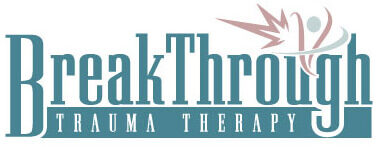The Eye Movement Desensitization and Reprocessing (EMDR) therapy has helped many people process trauma-related issues since its inception in the late 1980s by Francine Shapiro. It can effectively treat anxiety and depressive disorders, phobias, substance abuse, and eating disorders resulting from trauma. As the name suggests, EMDR enables individuals to process distressing memories, reduce the emotional intensity of the ordeal, and respond to adaptive thought, emotional, and behavioral patterns. It undoes the glitch that the brain creates to prematurely block, suppress, or avoid traumatic experience(s), but in so doing, turns you into a slave of your worst nightmares.
What Happens During An EDMR Session?
 Every EMDR session has an eight-phase process guided by a certified therapist. The journey begins with history-taking and treatment planning, where the therapist gathers your personal history and identifies the specific traumatic memory requiring attention. The therapist also assesses your current emotional state and symptoms to tailor the treatment plan.
Every EMDR session has an eight-phase process guided by a certified therapist. The journey begins with history-taking and treatment planning, where the therapist gathers your personal history and identifies the specific traumatic memory requiring attention. The therapist also assesses your current emotional state and symptoms to tailor the treatment plan.
In the preparation phase, your therapist explains the mechanics of EMDR therapy, informs you about the trauma-focused work ahead, and equips you with relaxation techniques to manage any distress that may arise during the sessions. Once prepared, the counselor guides you in assessing, identifying, and targeting a specific trauma memory.
With the stage set, the desensitization phase begins. Your therapist uses bilateral stimulation techniques, such as side-to-side eye movements, alternating auditory tones between the left and right ears, or tactile sensations as you focus on the targeted distressing memory. The approach allows you to untangle and reprocess the traumatic memory to alleviate its emotional intensity.
Your therapist then guides you into replacing the negative beliefs and memories associated with the traumatic event with more adaptive and constructive perspectives, fostering personal growth and healing. The scanning phase follows, enabling you to identify any lingering physical tension or discomfort linked to the traumatic memory.
The closure phase, skillfully guided by your therapist, enables you to return to a state of emotional equilibrium and safety, ensuring you exit the session in a grounded and composed state. The last session focuses on reevaluation. Your therapist reviews your progress, assesses your response to the therapy, makes any necessary adjustments to the treatment plan, and plans future sessions accordingly.
Jane’s Recovery From a Car Accident Trauma
Jane started on EMDR therapy to treat her panic attacks. Her mental health took a turn for the worse after a grisly road accident, which had left a relentless fear in its wake. She could not sit in a car without being engulfed by debilitating panic attacks.
Physical recovery was not sufficient to dull her mental anguish. The trauma controlled her life, making her a slave to her fears. Each panic attack episode reinforced her fears, overwhelming her sense of safety and comfort whenever she was commuting.
At the onset of her therapy, she grappled with this despair that had a stranglehold on her. She was not sure EMDR would be her beacon of hope. Nevertheless, with an empathetic and skilled therapist guiding the way, Jane embarked on a path to confront and conquer the haunting memories that had bound her for so long.
Through EMDR, Jane disentangled the emotional knots tethered to that fateful accident. Her breakthrough came after 12 therapy sessions, each experience gradually but resolutely unfolding her transformation. The therapeutic process was a journey of self-discovery and healing. Jane delved deeper into her ordeal, peeling back the layers of distress that had brought such debilitating panic attacks.
The therapist used bilateral stimulation to help her process the traumatic memories and reduce her emotional distress over the incident. This unique approach allowed Jane to rewire her perception of the traumatic event. It enabled her to confront her fears and discover effective coping strategies to manage her anxiety. She learned to breathe through the moments of distress, to anchor herself in the present, and to regain control of her emotions. It was a remarkable journey of resilience, strength, and self-discovery.
With each passing session, the grip of her anxiety loosened. Her distress during car rides diminished, and the intensity of her panic attacks waned. The therapist worked to replace her negative beliefs about herself and her capacity to cope with the trauma with more positive and adaptive ones. Slowly, Jane started to believe in her resilience and her ability to overcome her fears.
At the end of her EMDR therapy, Jane had emerged on the other side of her ordeal as a transformed individual. She felt comfortable sitting in a car again and regained the freedom to drive. Her EDMR sessions became a remarkable journey of resilience, strength, and self-discovery.
 You Can Be Free From Trauma
You Can Be Free From Trauma
It is possible to live a trauma-free life. EMDR therapy helps you confront your past, cultivate mental fortitude, and rediscover yourself. Begin your journey today with the help of a certified counselor.

